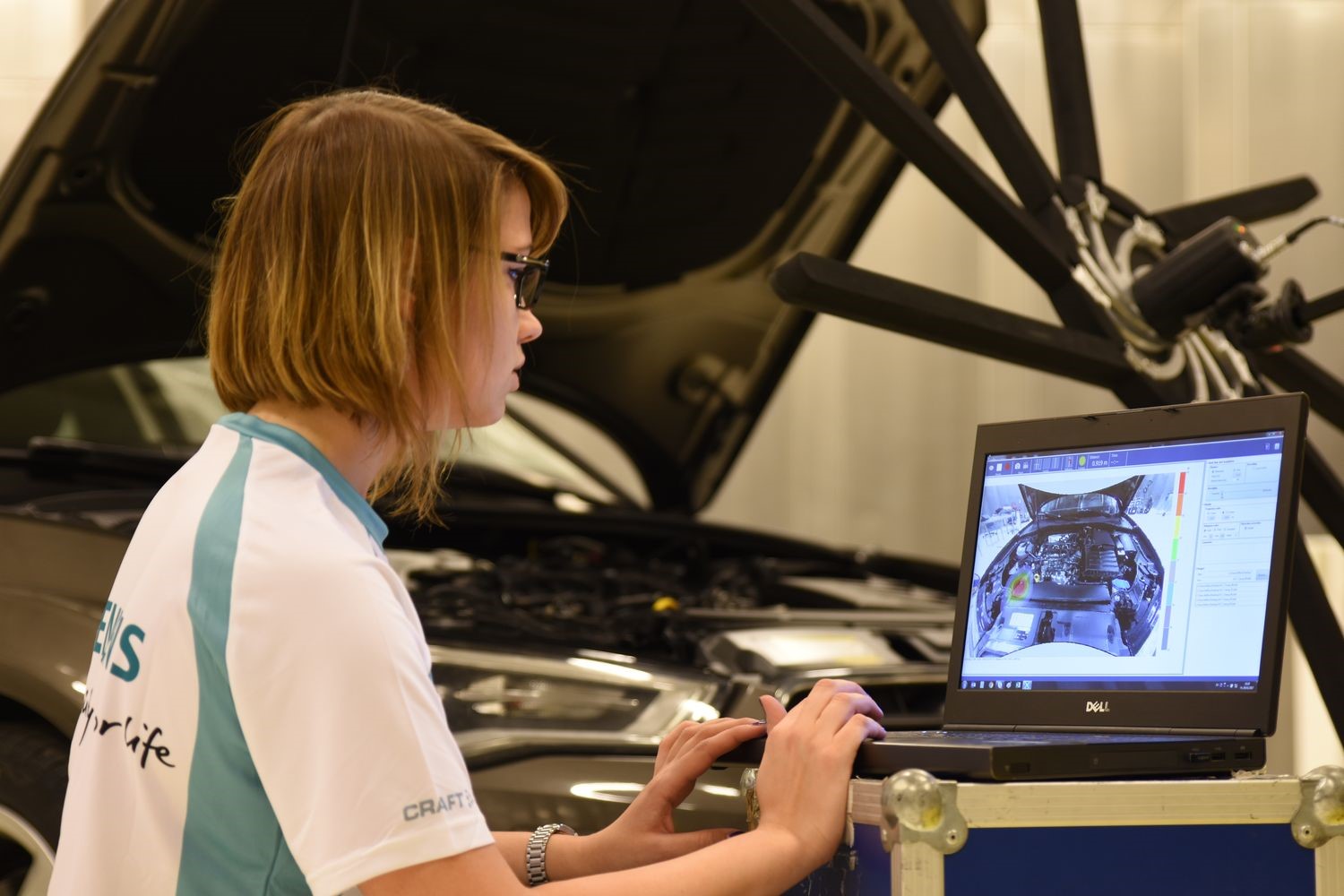Sound camera: Why you should consider using one today?

Vehicle NVH and acoustics teams encounter a lot of challenges. On component, subsystem, and full assembly level. On fossil fuel-powered engines, electric components, their inverters, their batteries.
Whatever sound and vibration targets are set, they should be met, if not exceeded. Every part of the assembled prototype needs to play according to the engineering partition to obtain the chosen tune. For acousticians, designing the sound package of a vehicle is like composing a symphony while having to deal with the requirements of some music haters.
Tuning the sounds of parts and pieces, removing disturbing harmonics, muffling annoying buzzes are as many daily challenges of acoustic teams. And despite careful target setting and extensive simulation work, noise problems sometimes occur in the least expected way.
What you need when it just doesn’t sound right is a tool that helps you pinpoint the origin of the annoyance, quickly and accurately. There’s no time for doubt, there’s no room for uncertainty. No matter whether you’ve been integrating a new fuel injection system, evaluating modifications of the firewall or validating the door seal package, if there’s the slightest noise issue in your new design, you want to spot and fix it now.
Getting smart with sound source localization
With engineering teams being very selective in their capital expenses, it becomes more and more crucial to rely on all-in-one versatile tools that can do the job efficiently at all times. Modern source localization solutions let you identify the source of unwanted noise in less than 2 minutes – instantly in fact. You’ll only need to spare those 2 minutes to unpack the sound camera.
Now, because it only takes a minute to setup and measure, and requires absolutely no training to do so, there is no excuse anymore for not using the tool. Like a Swiss knife in your acoustic toolbox, the Simcenter Acoustic Camera system can easily be employed anywhere and covers a large portion of your acoustic measurement needs.
What you may think about Simcenter Sound Camera
So, if you had any of the below objections, it’s time to reconsider using a sound source localization system.
I don’t have time to set up a measurement.”
Measuring with Simcenter Sound Camera is faster than preparing your morning coffee.
“All my skilled engineers are busy right now.”
Ask your job starter or technician to check the issue and get a second opinion by the expert later on. Setting up Simcenter Sound Camera is as easy as 1-2-3. The recorded data is then available for replay or further analysis.
“I need to measure in real life condition.”
Then, take the sound camera out on the field with you. It is compact and robust enough to be used in open field conditions.
“I don’t have sufficient acquisition frontends – none is available right now.”
Good news, Simcenter Sound Camera doesn’t require any.
“I already have a full setup with microphones and a Simcenter SCADAS data acquisition system.”
Well, quickly plug Simcenter Sound Camera as an additional sensor to your setup and perform your test as planned.
“I’d like to perform some more advanced analyses next to my troubleshooting tasks.”
Seamlessly use the Simcenter Testlab software for deep insight and extensive analysis of the recorded data and unleash your acoustic expertise in order to solve the noise issue.
Typical examples how to use sound camera
So, now, what is your excuse for not yet using a fast, easy and versatile tool like the Simcenter Sound Camera?
Get also inspired by these short videos showcasing potential use cases of the sound source localization system:
How to localize sound source on a car door
How to localize sound sources on a car rear window wiper
How to localize sound sources on an engine during run-up
Last, are you wondering how sound source localization exactly works?
Follow the free webinar “Fundamentals of sound source localization” and get inspired on how you can benefit from this technology in your daily work.


